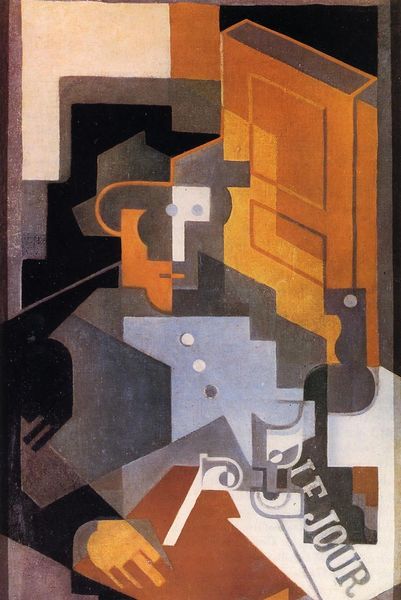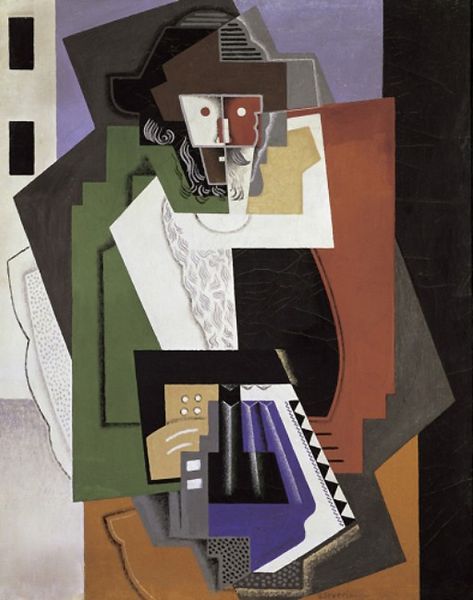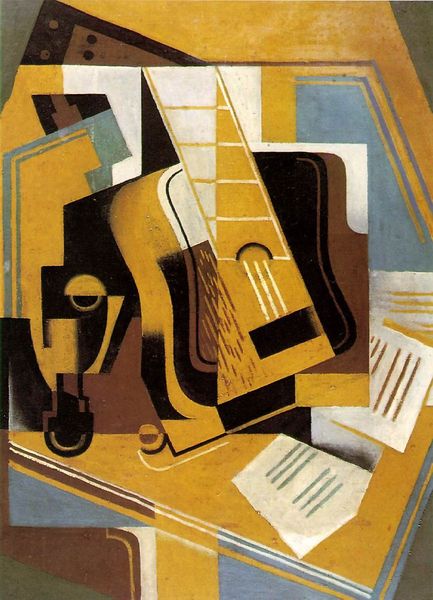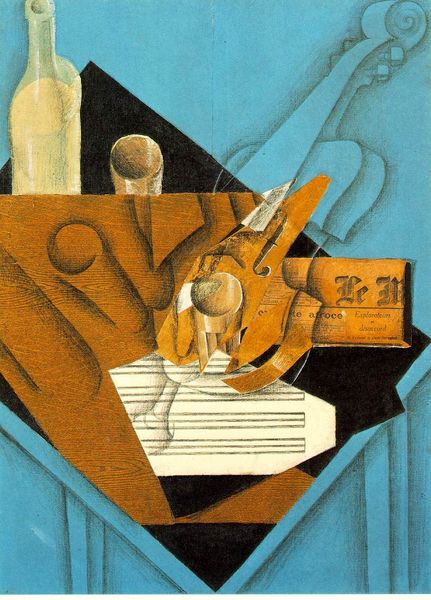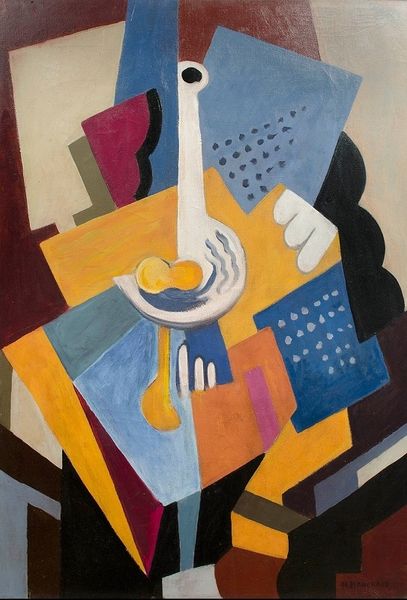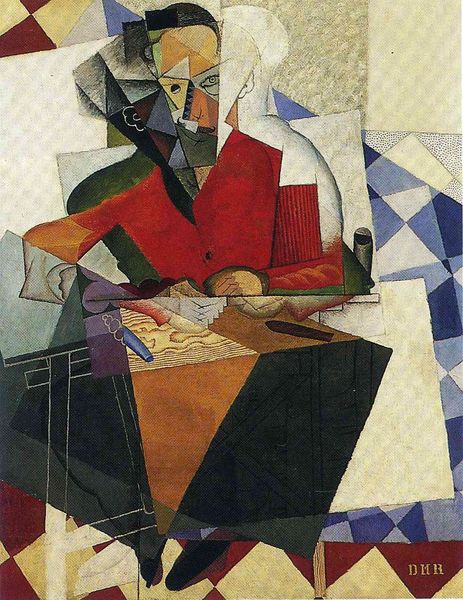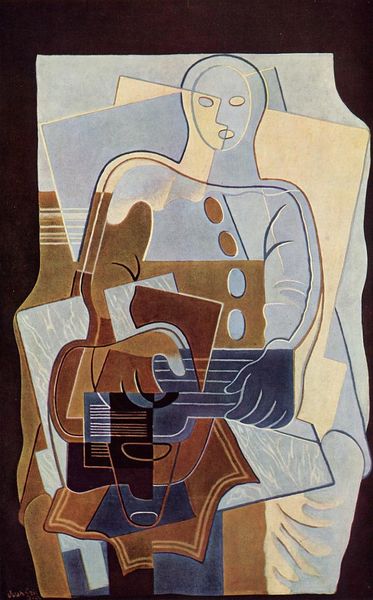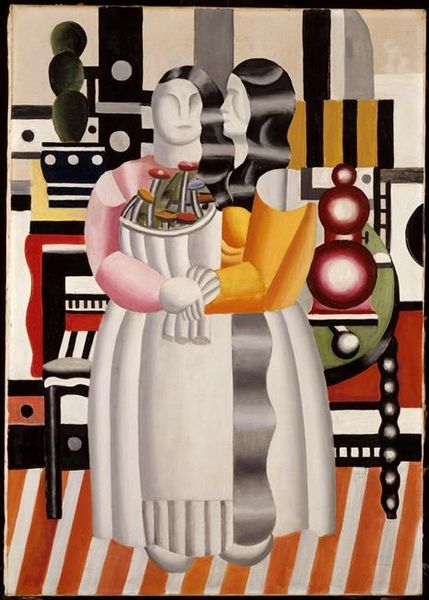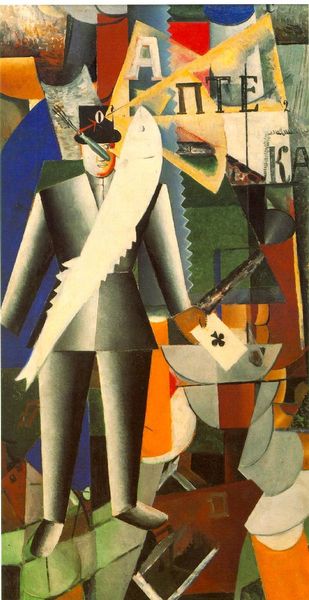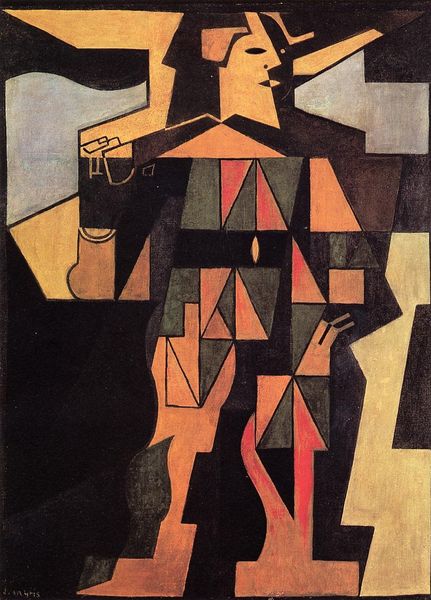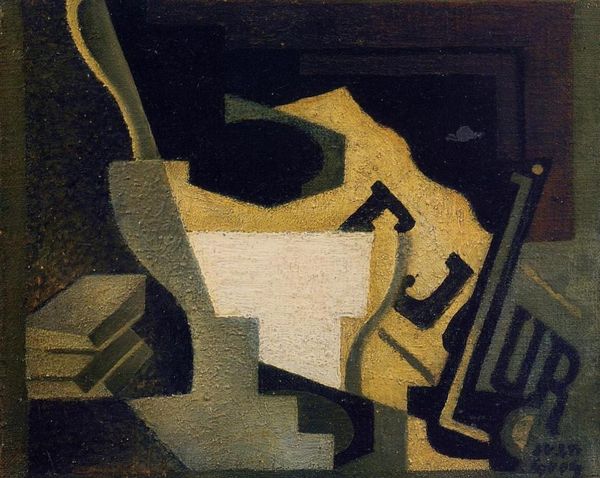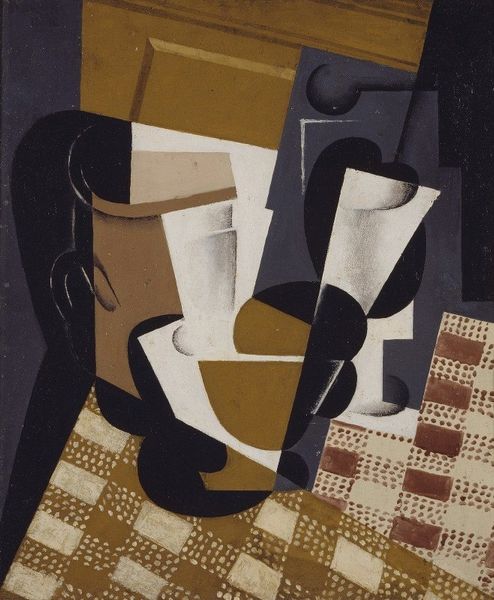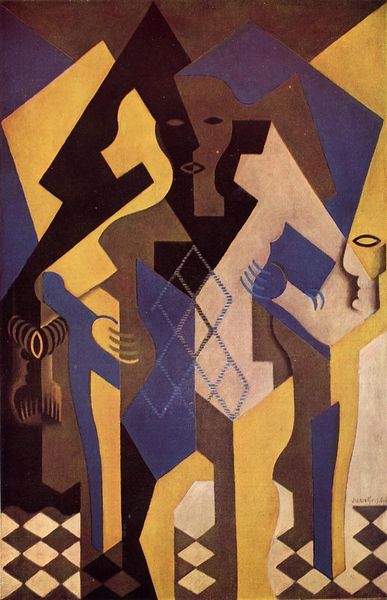
painting, oil-paint
#
portrait
#
cubism
#
painting
#
oil-paint
#
caricature
#
figuration
#
portrait art
Dimensions: 115 x 73 cm
Copyright: Public domain
Editor: This is Juan Gris' "Pierrot," painted in 1921. The medium is oil on canvas. I’m immediately struck by how fragmented the figure is, yet it still manages to convey a sense of melancholic stillness. What draws your attention in this piece? Curator: I am interested in the way Gris uses paint to explore the commodification of artistic labor. Note the distinct planes of color, almost like individually manufactured components, brought together to form this Pierrot. How do the materials themselves – the oil paint, the canvas – contribute to the construction of meaning? Editor: That’s interesting. I hadn't thought about the materials as individual components contributing to a bigger statement. Is he perhaps commenting on how artists are just another cog in the machine, so to speak? Curator: Precisely! Consider the historical context: the rise of industrialization and mass production. Gris seems to be reflecting that shift within the art world. Are the geometric forms a kind of factory output that simulates high art, while exposing art-making as a form of labour and also subtly challenging the line between artisanal craft and mechanised creation? Editor: I see. It’s like he’s dissecting the very process of creating art and then reassembling it for us to analyze. I suppose the presence of musical instrument underscores how artistic work involves tools. The question then becomes to what end and what power dynamics? Curator: Exactly. The choice of Pierrot, a traditional figure of the Commedia dell'arte, is not accidental, given that Commedia was also often commenting on those social and power dynamics. In that era those were definitely on the cusp of some big, industrial shifts. Now knowing this perspective, how does that information shape how you will see cubism moving forward? Editor: This has broadened my thinking of cubism far beyond the pure geometry. I hadn’t considered the labor aspect, which sheds a different light on the materials and techniques used. Thanks, I feel better prepared for my Art History paper that is due next week. Curator: My pleasure. Remember, art is not just about aesthetics; it's also a product of its time, reflecting the socioeconomic realities that shaped its creation.
Comments
No comments
Be the first to comment and join the conversation on the ultimate creative platform.

